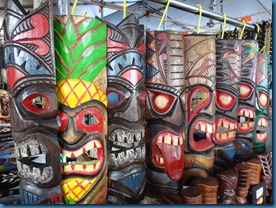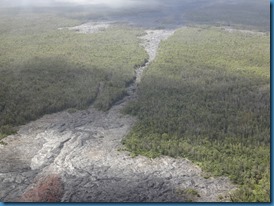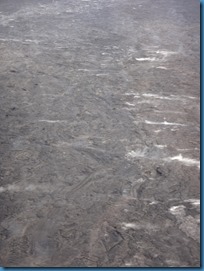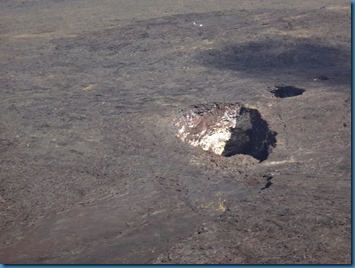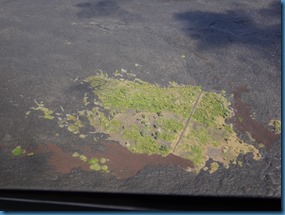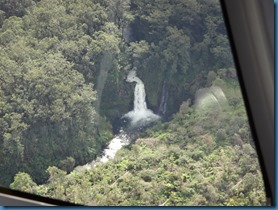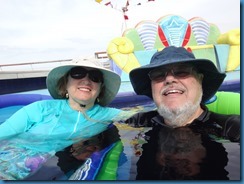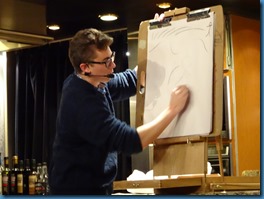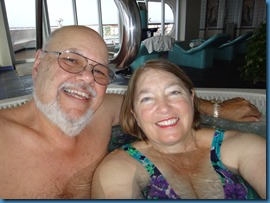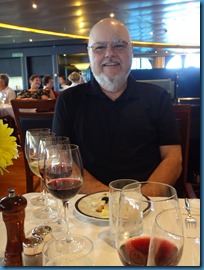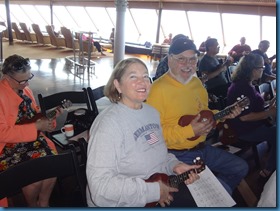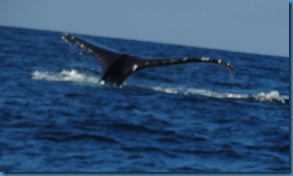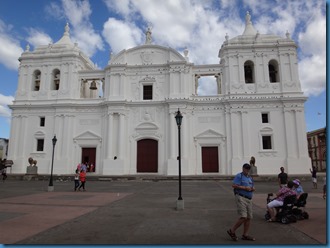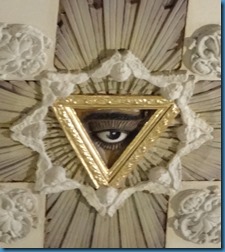… near our port in Hilo, Hawaii. Hawaii’s second-largest city (after Honolulu), Hilo seems like a small town, nothing like bustling, cosmopolitan Honolulu. We took a taxi to the market, selling mostly handmade items. Our favorite stand had fascinating “portable beaches” inside heavy glass enclosures. In search of sketch books and pencils, a vendor mentioned Hilo’s Ben Franklin store. Our wonderful Bens (Gaithersburg and Damascus) are long closed, but this one was great, with a bit of everything.
We headed back to the ship for our afternoon excursion: a helicopter ride over Kilauea, the world’s most active volcano. Continuously erupting since 1983, the evidence of its power is stark against the rain forest foliage. The ribbon of lava stopped snaking its way toward the city about two years ago. On the coast, the red-hot lava boiled through a lava tube into the sea, sending plumes of white steam and occasional chunks of debris high into the air.
We circled around the center of current activity, an almost flat field, with vent holes steaming along the path of underground lava tubes.
When the lava emerges, it goes from 2500 degrees to 500 degrees in 2.5 seconds, forming the black crust of rock in these photos, inexplicably leaving behind small islands of trees and fragments of roads unscathed.
Volcanoes, waterfalls and rainbows - the Big Island has it all! Literally flying through a rainbow as Izzy Kamakawiwo’ole’s “Over the Rainbow” played in the background, we suddenly had a postcard-worthy shot of our ship from the air!
